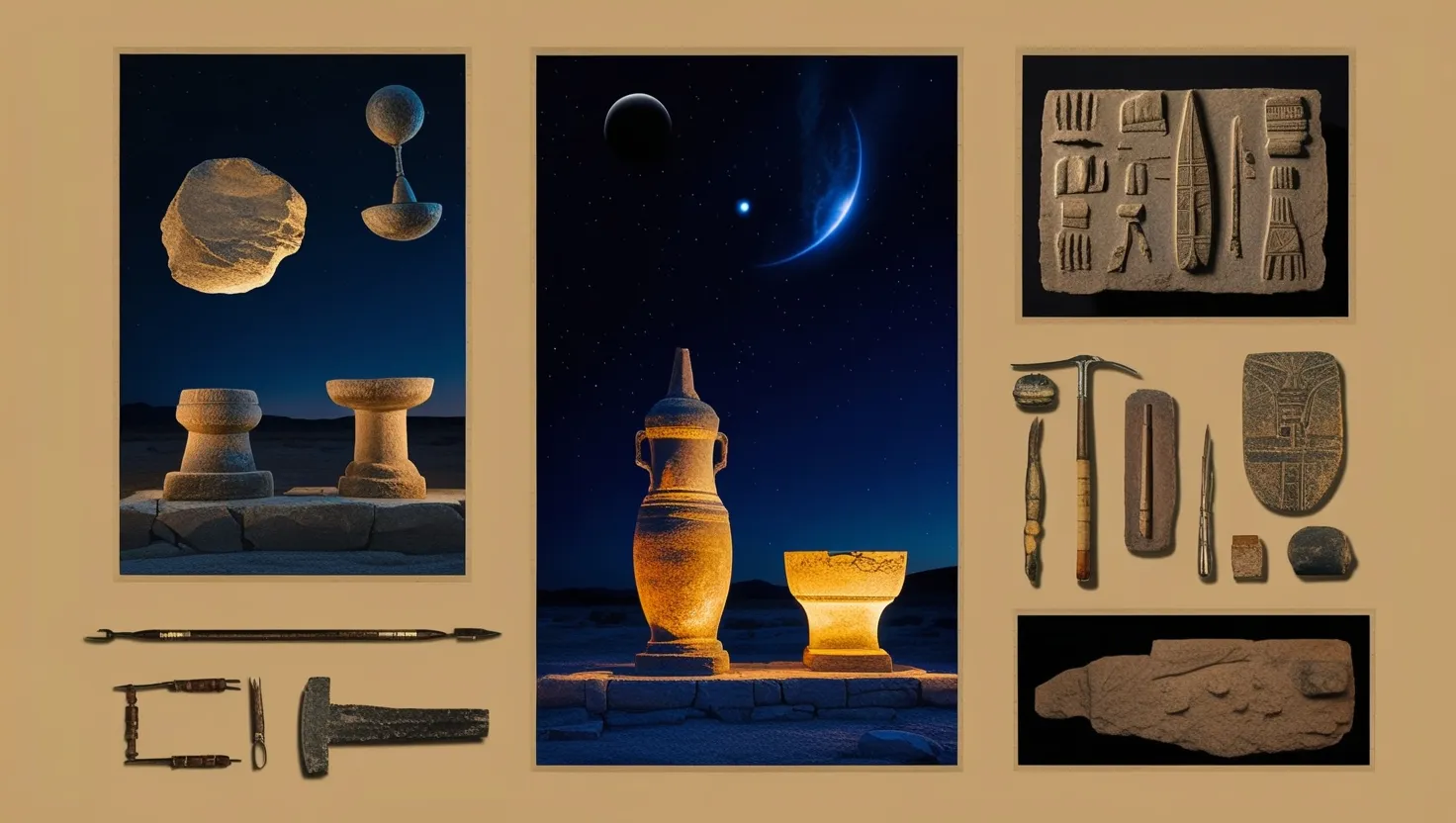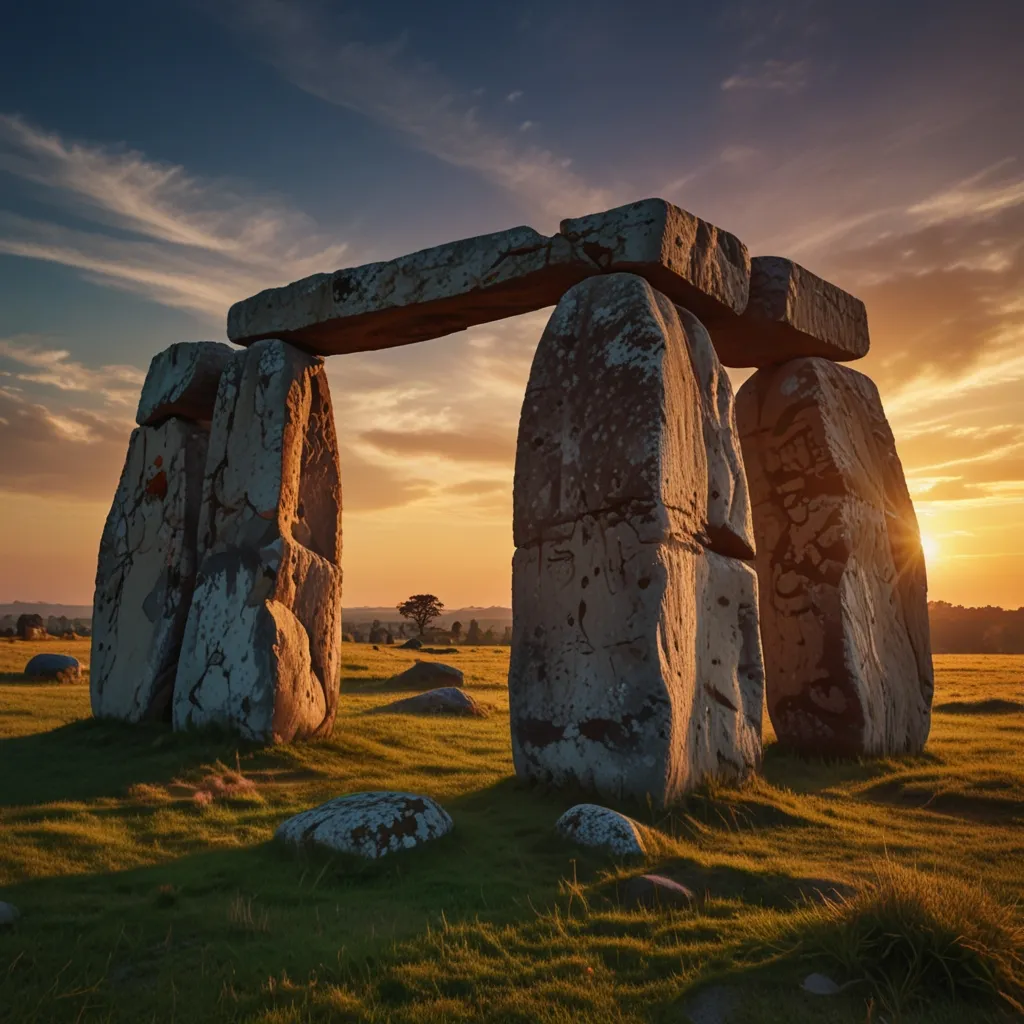UFOs, interdimensional beings, or just figments of imagination – who knows? These mysterious sightings pop up everywhere, from the far reaches of deserts to the vast expanse of oceans and bustling cityscapes. But one thing seems consistent – they love nuclear weapons. Since the nuclear age began, strange crafts have been spotted around test sites and nuclear facilities more frequently than you’d expect.
Now, let’s veer into the realm of historical mystique. Enter the Ark of the Covenant, the fabled sacred chest built of wood and gold, which vanished from the radar around 587 BC, last being seen in Jerusalem. And wouldn’t you know it, a UFO showed up in 2011 hovering over the Dome of the Rock on the Temple Mount in Jerusalem. It flashed a bright light and then zipped away into the night sky. Coincidence? Maybe. Or maybe it was on the hunt for the Ark.
The Ark’s allure isn’t just about its religious significance; it’s the sheer power associated with it. It’s believed to be the most dangerous weapon of mass destruction ever created. The legend says it could unleash plagues, cause natural disasters, and even make an army invincible. Could it have been a superweapon for the righteous, as some say?
The story of the Ark begins in the biblical book of Exodus. It’s mentioned over 200 times in the Bible, recounting its journey with the Israelites through the desert to the promised land. The Ark would supposedly fly ahead, leading the way, parting rivers, creating walls of fire, causing city walls to crumble, and mountains to reduce to dust. Sounds like quite the co-pilot, doesn’t it?
Zoom into the narrative of Moses at Mount Sinai. God gave him two stone tablets with the Ten Commandments, instructing that these be placed in a chest, the Ark of the Covenant. Very specific instructions were given for its construction – a chest made of acacia wood, overlaid with gold, adorned with cherubim (winged figures, sometimes depicted as angels, sometimes as winged sphinxes), and carried by priests. However, the thing was so dangerous that anyone touching it would be killed. Makes one wonder if this Ark had some serious tech behind its godly facade.
Some theories suggest the Ark was not supernatural but rather a high-tech artifact. One popular theory is that the Ark was an electrical capacitor created with layers of conductive gold and dielectric wood, capable of storing and discharging electricity like a lightning bolt. There’s even a story in the Bible of a priest named Uzzah who was instantly killed when he touched the Ark to steady it – a death that feels eerily like electrocution.
Then there’s the idea that the Ark was a communication device. Supposedly, God spoke to Moses through the Ark from above the cherubim, which might have functioned as antennas, converting electrical energy into radio waves. There’s even a suggestion that the Ark might have contained radioactive materials, like uranium, releasing energy through nuclear fission. Its rumored powers to bring down city walls with surreal vibrations also hint towards some hidden technology.
Fast forward to the present day, and the Ark’s exact location remains a tantalizing mystery. There are many theories, legends, and suspected resting places, from vast networks of tunnels under Jerusalem’s Temple Mount to the forgotten recesses of qumran and Ethiopia.
One of the more intriguing theories involves the Copper Scroll discovered among the Dead Sea Scrolls. It lists numerous secret locations of temple treasures, potentially including the Ark. Some researchers, like Jim Barfield, have even identified promising sites using metal detectors, though permission to dig has repeatedly been denied.
The Knights Templar, those legendary crusaders, also figure into the Ark’s tantalizing lore. Some suggest they found the Ark and moved it around Europe, from France to Scotland, eventually hiding it at Roslyn Chapel. An intricate system of tunnels and structures in various locations hints at their secretive and enigmatic operations guarding these holy relics.
Ethiopia’s claim to the Ark is particularly fascinating. An ancient text, “The Kebra Nagast,” posits that the Ark was stolen from Solomon’s Temple by Menelik, son of the Queen of Sheba and King Solomon, and brought to Aksum in Ethiopia where it is still guarded to this day in the Church of Our Lady Mary of Zion. Although there is compelling anecdotal evidence and consistent local lore, no outsider has ever laid eyes on it.
Wars and conflicts have also blurred the lines of the Ark’s tale. Both the Babylonians and the Romans were known to have looted Jerusalem, yet records of the Ark remain elusive. The Knights Templar might have safeguarded it through the ages, relocating it strategically to avoid capture.
World War II brought another wild twist – the Nazis, obsessed with collecting powerful religious artifacts, sought the Ark too. Some suggest it was thereafter moved to Nova Scotia’s Oak Island. This theory embellishes the myth of Oak Island’s hidden treasures, binding it to the saga of the Ark.
Yet amidst all these swirling theories, one area of reluctance stands out – the Temple Mount. Any digging there is strictly prohibited, due to its sacred status to multiple religions. Thus, the most plausible hiding place of the Ark might remain inaccessible, buried deep enough to avoid detection and disturbance.
Interestingly, biblical prophecies link the return of the Ark to apocalyptic events. If the Ark were ever found, its discovery could unleash global conflict over its ownership, fulfilling those dreaded prophecies and perhaps, inadvertently, setting off a catastrophic chain of events.
So, while chasing the Ark might sound like a grand adventure, it’s perhaps best left as a mystery, held cautiously by legends and whispers rather than uncovered and fought over. The Ark, with all its implied power, indignation, and divinity, should probably stay lost for the sake of our collective peace.
Mysteries are often best when they stay that way – unsolved, beckoning curiosity, yet wreathed in the shadows of time and legend. Wanting to know more is in our nature, but sometimes, not knowing – the wonder, the speculative whispers, and the enigmatic allure – that’s the real treasure.
And so, for the time being, the Ark of the Covenant sits in its secret sanctuary – be it in stories, under sacred grounds, or hidden in plain sight – and the world keeps turning, mysteries intact, adventures beckoning, and the ever-human quest to uncover the unknown continuing.






